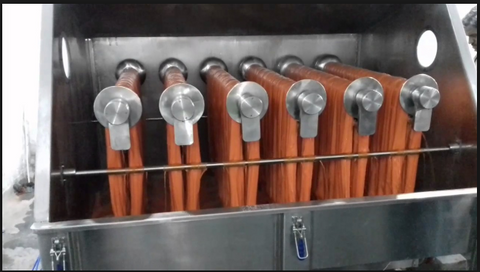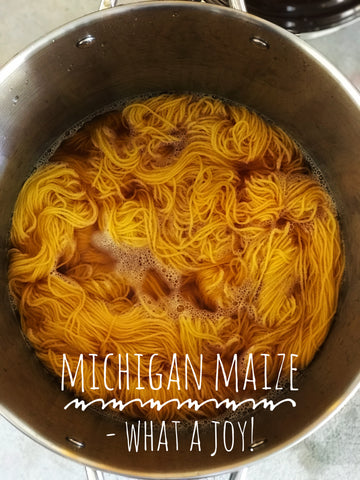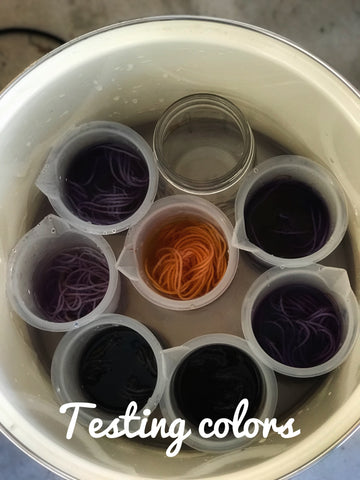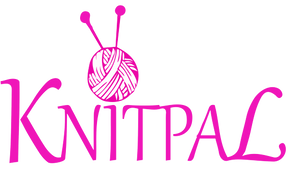
6 Things You’ve Always Wanted to Know About Hand-dyed and Mill-dyed Yarn
Have you ever wondered how yarn is dyed or what the differences between hand-dyed and mill-dyed yarn are? Then read on!
We all know the bliss of seeing all the skeins of yarn that are just waiting to be turned into a wide variety of hand-knitted items, like our supporters gear. But have you ever stopped to wonder how all those magnificent colors and color-effects are created? In this post, we take a closer look.
How is yarn dyed or colored?
Yarn is dyed or colored through the use of different types of dyes that are applied either before or after the chosen fiber is spun into yarn. Different effects can be achieved by dyeing either in fiber-form or in yarn-form. One of the reasons for this is that, if fiber is dyed before being spun, different colors can be plied together to form the yarn.
Fibre dyed before being spun is called “dyed in the wool”, while fiber dyed after spinning is called “yarn-dyed” or “piece-dyed”.
Often the dye technique and the dye that is used depends on the type of fiber the yarn is made from; for instance, whether it is natural or synthetic fibers. For example, acid dyes are used on fibers that come from animals — like wool, alpaca, and mohair. KnitPal uses acid dyes to color their vibrant yarns.
What are “acid dyes”?
Acid dyes are a common type of dye that is used to color animal fibers, silk, and nylon. The animal fibers include wool, alpaca, and mohair. They’re not effective on most synthetics or plant fibers. While “acid” may sound harsh, it’s good to know that the acid that is used during dyeing is usually vinegar or citric acid (that is found in citrus fruit).
What are the main differences between hand-dyed and mill-dyed yarns?
While hand-dyed and mill-dyed yarns may be dyed using the same type of dye, for instance, an acid dye, there are some specific differences between the two types of dyed yarn:

- First and foremost is the scale on which yarn is dyed. It differs significantly between hand-dyed and mill-dyed yarns.
- Mills process fiber, spin them into yarn, and dye them, while the hand-dyed yarn is usually un-dyed yarn bought from a mill and dyed in smaller batches.
- Mills’ dyeing is — usually — not done manually, as the output is commercial. Because the dyeing isn’t done by hand, the skeins’ colors will be the same or have extremely little variance.
- Mill-dyed yarns are also too commercial — dyeing in batches that are too large — for natural dyes. Therefore, if you want yarn that is naturally dyed, you will need to look for hand-dyed yarn.
It should be remembered, however, that mills can also drastically differ in size and output. Not all mills can produce (or want to produce) yarn for the biggest suppliers and brands.
What are “indie-dyers”?
Indie-dyers are dyers who work independently from large corporations (much like indie musicians) to dye yarn on a small scale in small batches. Dyeing is usually done by the dyer themselves and the dyeing may be done in the kitchen or garage — fitting in that space because the output is so small.
Also, because the batches are so small and all of them are done by hand, each skein can be unique and colors can vary from batch to batch (all the more reason to buy that sweater-quantity all at once). However, this doesn’t mean that the product is not in demand!
Why choose hand-dyed yarns?
Hand-dyed yarns are still unique, although the output is usually larger than with indie-dyers. The colors are also a lot more consistent from batch to batch. You therefore get the best of both worlds; the hand-made touch with the consistent colors of more commercial dyeing.

The colors of the hand-dyed yarns remain bright and, because they are still made in small batches, can be tweaked easily to keep the colors consistent and anything but dull.
The love and care that goes into the making of hand-dyed yarns can be felt by the knitter or crocheter as they work with the yarn. In turn, the care with which the yarn has been made also gets added to the love that the knitter or crocheter work into their project. The end product is an item that is brimming with love in every stitch worked.
What Makes KnitPal’s Hand-dyed Yarns So Special?
KnitPal’s merino yarn mainly comes from Peru. The merino sheep are raised by small farmers in the Andes of Southern Peru — at an altitude of 11 500 — 16 000 ft above sea level. At this height, temperatures can differ by more than 50 degrees in one day. For this reason, the sheep grow dense coats of fleece that are not only extremely durable, but also has a high thermal quality. KnitPal supports women-led farms by buying their yarn from them. But that’s not the only thing that makes KnitPal’s yarns so very special; it is also the way in which they are hand-dyed with love and happiness.
Based on Dr. Masaru Emoto’s recent research, the shape and molecular structure of water changes with positive messages, prayer, and music. At KnitPal we are truly inspired to bring happy and healthy energies and only good feelings to the yarn that we’re sending to your home.
In order to be able to do this, we soak the yarn in warm water the night before we dye the yarn. While we do this, songs full of love, gratitude, and happiness are played. Lately, our music of choice is some of The Beatles’ classic songs, including “All You Need Is Love” and “Come together”.

When it comes to the actual dyeing process, it is a labor of love to get each skein dyed to perfectly match your team’s colors because we know how important that is to you. You can’t support your team in faded colors! We test the color a few times before applying it to the yarn and we make sure that we use the established Pantone and CMYK systems to ensure the colors are matched perfectly every time.
